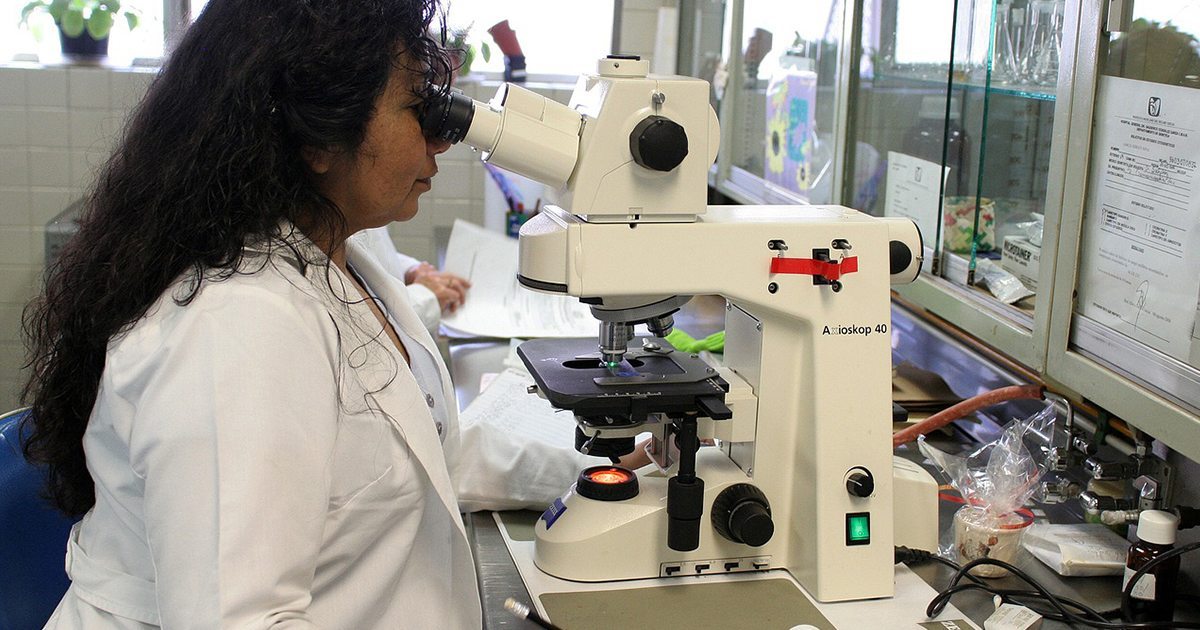Category: Treatments

European Commission Grants Orphan Status to Mesothelioma Drug
Once again the European Union has taken the lead in medical care by granting orphan status to a drug touted as bringing a new treatment option to patients with mesothelioma. On June 13, Verastem, Inc. announced its investigational drug VS-6063 received orphan medicinal product designation from the European Commission for use in mesothelioma.
Last year, the European Commission was applauded for bringing a new era to medicine in the Western world by approving gene therapy for the treatment of certain rare disorders. This approval paved the way for breakthrough treatments for diseases with a very high unmet medical need, such as mesothelioma.
Mesothelioma is a rare, highly aggressive cancer that develops over decades after exposure to asbestos. Designated a rare, or orphan, disease in both the United States and Europe, mesothelioma is diagnosed in close to 3,000 Americans and nearly 2,400 Brits each year. Britain has more deaths from asbestos-related diseases than any other country. Treatment for the disease is limited and currently, there is no cure for the disease.
Verastem, Inc., based in Cambridge, MA, is a clinical-stage biopharmaceutical company focused on discovering and developing drugs to treat cancer by the targeted killing of cancer stem cells. VS-6063 is indicated for use in mesothelioma patients that are lacking the Merlin protein. Merlin is believed to play a role in controlling cell shape, cell movement, and communication between cells. Merlin also functions as a tumor suppressor protein, which prevents cells from growing and dividing too fast or in an uncontrolled way.
According to Verastem, approximately 40-50% of mesothelioma patients lack Merlin. Studies by Verastem and others have shown that Merlin-low mesothelioma cells and tumors appear to be particularly sensitive to focal adhesion kinase inhibition, or FAK, which VS-6063 addresses.
Verastem held a mesothelioma briefing session with Dr. Dean Fennell at the American Society of Clinical Oncology meeting held in early June. According to the company’s press release, the discussion focused on the role of cancer stem cells and the tumor suppressor Merlin in mesothelioma progression. Verastem noted that the current mesothelioma treatments fall short when it comes to killing the cancer cells because they do not get to the heart of the cancer cells, the cancer stem cells, which VS-6063 targets. Various studies have shown that cancer stem cells can survive the effects of anti-cancer drugs and continue to grow and divide causing the cancer to metastasize.
“Mesothelioma is a devastating disease with limited treatment options,” said Dr. Joanna Horobin, Verastem Chief Medical Officer. “We are moving quickly to bring new treatment options to patients with mesothelioma.”
Verastem is working in conjunction with LabCorp to develop a biomarker test to identify those mesothelioma patients low in Merlin. In addition to the upcoming mesothelioma study, VS-6063 is currently being evaluated in a Phase 1/1b trial in combination with paclitaxel in patients with ovarian cancer.
Sources
- Verastem, Inc
http://phx.corporate-ir.net/phoenix.zhtml?c=250749&p=irol-newsArticle&ID=1829497&highlight= - American Society of Clinical
http://www.cancer.net/cancer-types/mesothelioma/statistics

Penn Researchers Developing Protein ‘Passport’ To Help Deliver Cancer Drugs
The body’s immune system is designed to defend against bacteria, viruses and other perceived “foreign invaders” that assault the body. Unfortunately, the immune system doesn’t distinguish between harmful bacteria and friendly foreign objects such as medical devices implanted in a patient or nanoparticles used to deliver medicine to tumors. That poses complications to doctors trying to administer treatments to people with cancer, including malignant mesothelioma, a cancer caused by exposure to asbestos.
Doctors would like to avoid triggering an inflammatory response in cancer patients when they administer medicine or when implanting a pacemaker or artificial joint. Researchers at the University of Pennsylvania are experimenting with what they describe as “a passport” to allow therapeutic devices to get past the immune system, according to new research published in the journal Science.
The human body’s innate immune system responds to foreign bodies in a generalized way, trying to destroy anything it doesn’t recognize as a part of the body. The team of Penn researchers says the solution is to make the foreign particles seem like part of the body so the immune system doesn’t destroy them.
The researchers reported this week that they had accomplished that feat in lab mice, attaching customized protein fragments to foreign particles that tricked the animals’ immune system. The key was tricking the immune-system “border guards” known as macrophages that are a type of white blood cell that find and eat invaders. Macrophages continually monitor the bloodstream for a type of protein called CD47, a marker of self. If an object such as a red blood cell has CD47 on its membrane, the macrophages let it pass.
The Penn team leader, Dennis E. Discher, a professor of chemical and biomolecular engineering, compared CD47 to a passport that identifies a cell as part of the body rather than a foreign object. The research team attached fragments of CD47 to plastic nanoparticles, then injected them into laboratory mice. Nanoparticles, which are smaller than one-billionth of a meter, are useful in delivering, antibodies, drugs and imaging agents and are being studied for diagnosis and treatment of cancer, according to the National Cancer Institute.
The researchers said the technique enhanced the performance of nanoparticles carrying tumor-shrinking medicine and other loaded with dye to capture images of the tumors. They observed that the particles carrying a cancer drug Taxol were shrinking tumors in mice.
Discher said in an article in the Philadelphia Inquirer that the technique could be useful in overcoming resistance to much larger foreign objects in the body such as pacemakers and joint replacements.
Researchers not involved in the research called it a promising advance, though it will take some years before the technique is ready to use with human cancer patients.
Know more about mesothelioma and how you can deal with it.
Presiding Officer Enrolled in Experimental Treatment for Mesothelioma
The leader of the Suffolk County Legislature, William Lindsay, will begin next week an experimental treatment for mesothelioma overseen by the National Institutes of Health, according to Long Island Newsday.
Lindsay, a former electrician and official with the International Brotherhood of Electrical Workers, was diagnosed in 2012 with malignant pleural mesothelioma, a cancer caused by exposure to asbestos. The cancer diagnosis came soon after he had been elected to a seventh term as the legislature’s presiding officer.
Lindsay worked as an electrician for 15 years and served for 23 years as a business agent and business manager of Local 25 of the IBEW. As an electrician, he had to scrape off the asbestos fireproofing from a beam before attaching electrical conduits to it, according to Long Island Politics. Electricians are among the occupations with a higher risk of occupational exposure to asbestos and higher rates of mesothelioma.
Lindsay has been receiving treatment at Mt. Sinai Hospital in Manhattan and Memorial Sloan-Kettering Cancer Center since undergoing surgery last May to remove a diseased lung. “We don’t realize how lucky we are, being in the New York vicinity, to be near some of the greatest hospitals and physicians, probably in the world,” Lindsay said, according to minutes of a Suffolk County Legislature meeting.
Lindsay is 67 years old. Many victims of mesothelioma are in their 60s and 70s when they are diagnosed with the disease. The symptoms of mesothelioma typically take 20 years to 50 years to appear after exposure. He will receive one week of treatment followed by a 21-day break, then another week of treatment.
More information about New York Mesothelioma.
Researchers Assess Safety and Effectiveness of New Mesothelioma Drug
Medical researchers at Memorial Sloan-Kettering Cancer Center in New York have treated the first patient with a new experimental vaccinia virus-based cancer therapy designed for patients with malignant pleural mesothelioma or non-small cell lung cancer. Mesothelioma is a cancer of the lining of the chest cavity caused by exposure to asbestos.
Genelux Corp., a biopharmaceutical company that develops vaccinia virus-based cancer therapies, announced in a Feb. 6 press release the treatment of the first patient in the Phase I clinical trial designed to evaluate a drug known as GL-ONC1.
Vaccinia virus cancer therapies are part of an emerging area of medical research that utilizes modified viruses to target and destroy malignant cancer cells. Vaccinia virus produces a potent immune reaction to help destroy tumors. The virus was used extensively during the campaign to wipe out smallpox.
Through the current trial, the New York mesothelioma treatment researchers want to learn more about the safety and effectiveness of the new drug at different dosage levels on cancer patients with malignant pleural effusion. The accumulation of fluid between the thin layers of tissue lining the lung is known as pleural effusion. When the fluid contains cancer cells, it is known as malignant pleural effusion. A buildup of fluid is a complication that occurs in many patients who have pleural mesothelioma or lung cancer.
The clinical trial, which is recruiting patients, will assess the safety and tolerability of GL-ONC1 and the severity of side effects. The primary goal is to assess a safe dosage level. The trial may enroll up to 54 patients.
Dr. Valerie W. Rusch, a leading thoracic surgeon and expert on mesothelioma, is the lead researcher in the clinical trial sponsored by Memorial Sloan-Kettering Cancer Center.
“We are very pleased that researchers at MSKCC have initiated this important trial, “Dr. Aladar A. Szalay, founder and CEO of Genelux Corp., said in a press release. “For the first time, this will allow us to examine the feasibility and effects of administering GL-ONC1 directly into the chest cavity to some of the most aggressive cancers of the thoracic cavity—including mesothelioma and non-small cell lung cancer.”
Szalay said the drug has been well-tolerated and shown promising results in early trials involving human patients against a number of solid tumor cancers.
Mary Hesdorffer, executive director of the Mesothelioma Applied Research Foundation, an advocacy and support group, said novel therapeutic approaches based upon new scientific strategies may lead to more effective treatments and eventually a cure for mesothelioma.
Patient Has Lived Disease Free Since Diagnosis of Malignant Pleural Mesothelioma
Doctors in Japan describe the unusual case of a long-term mesothelioma survivor who was treated with chemotherapy and hyperthermia.
In the Dec. 28 online issue of the Journal of Medical Case Reports, doctors at Gunma University School of Medicine in Japan detail the case of a 61-year-old man who has lived disease free for seven years after being diagnosed with malignant pleural mesothelioma. Pleural mesothelioma is a cancer of the lining of the chest cavity caused by exposure to asbestos. The cancer typically has a high mortality rate.
The man was experiencing chest pain and had a history of exposure to asbestos for approximately five years. A CT scan showed a thickening of the pleural lining of his chest. It also revealed tumors had invaded the wall of patient’s chest. Doctors diagnosed the patient with stage 3 malignant pleural mesothelioma based on blood test results and an examination.
The patient was eligible for surgery, but refused to undergo surgery or receive radiation treatment. So doctors administered systemic chemotherapy with hyperthermia, which the medical center used as treatment for patients with inoperable lung cancer. The chemotherapy drugs consisted of cisplatin and irinotecan, an antitumor drug that interferes with how cancer cells multiply.
Hyperthermia is a type of cancer treatment in which body tissue is exposed to high temperatures of up to 113 degrees. According to the National Cancer Institute, high temperatures can damage and kill cancer cells, causing tumors to shrink, usually with minimal injury to normal tissues. Hyperthermia also may enhance the effectiveness of some anti-cancer drugs. It’s usually used in conjunction with other cancer treatments. The patient underwent hyperthermia treatment immediately after receiving the irinotecan drugs.
A month after the first cycle of mesothelioma treatment, the patient had a follow-up CT scan which showed that the thickening of the pleural lining had disappeared. He still has some fluid in his chest cavity, which is common for mesothelioma patients. The patient underwent three sessions of hyperthermia and a single course of chemotherapy. Another CT scan six years after the end of treatment revealed no evidence of a return of the cancer.
Patients diagnosed with mesothelioma typically have a poor prognosis because of the cancer’s resistance to conventional treatments. Many survive less than two years. As a result, medical researchers continue seeking more effective treatments for mesothelioma to extend the lives of patients and improve their quality of life.
The authors of the case report conclude that hyperthermia and chemotherapy may be a new and safe therapeutic option for treatment of pleural mesothelioma. They say that additional clinical studies of the combination of chemotherapy and hyperthermia are needed to further assess the effectiveness of the therapy.
Free Mesothelioma Patient & Treatment Guide
We’d like to offer you our in-depth guide, “A Patient’s Guide to Mesothelioma,” absolutely free of charge.
It contains a wealth of information and resources to help you better understand the condition, choose (and afford) appropriate treatment, and exercise your legal right to compensation.
Download Now